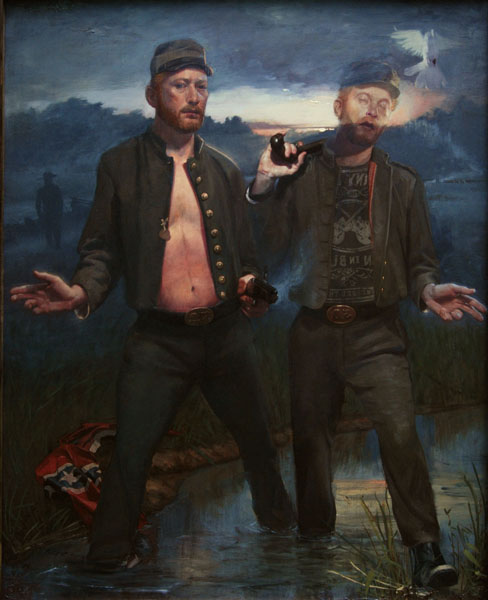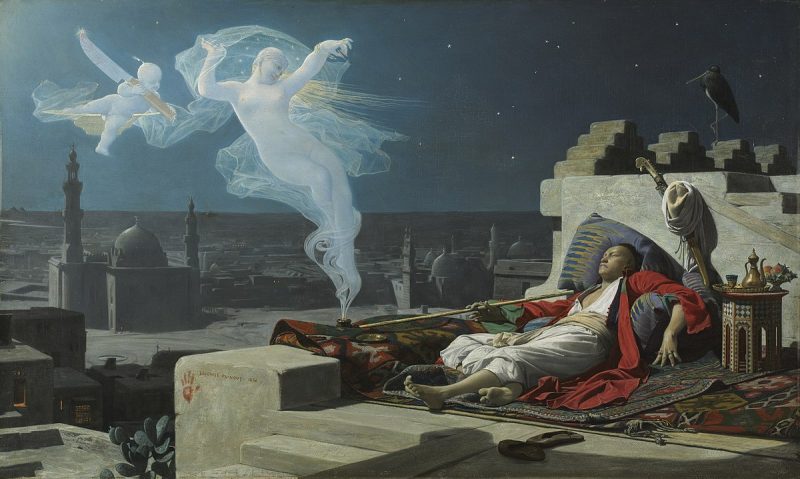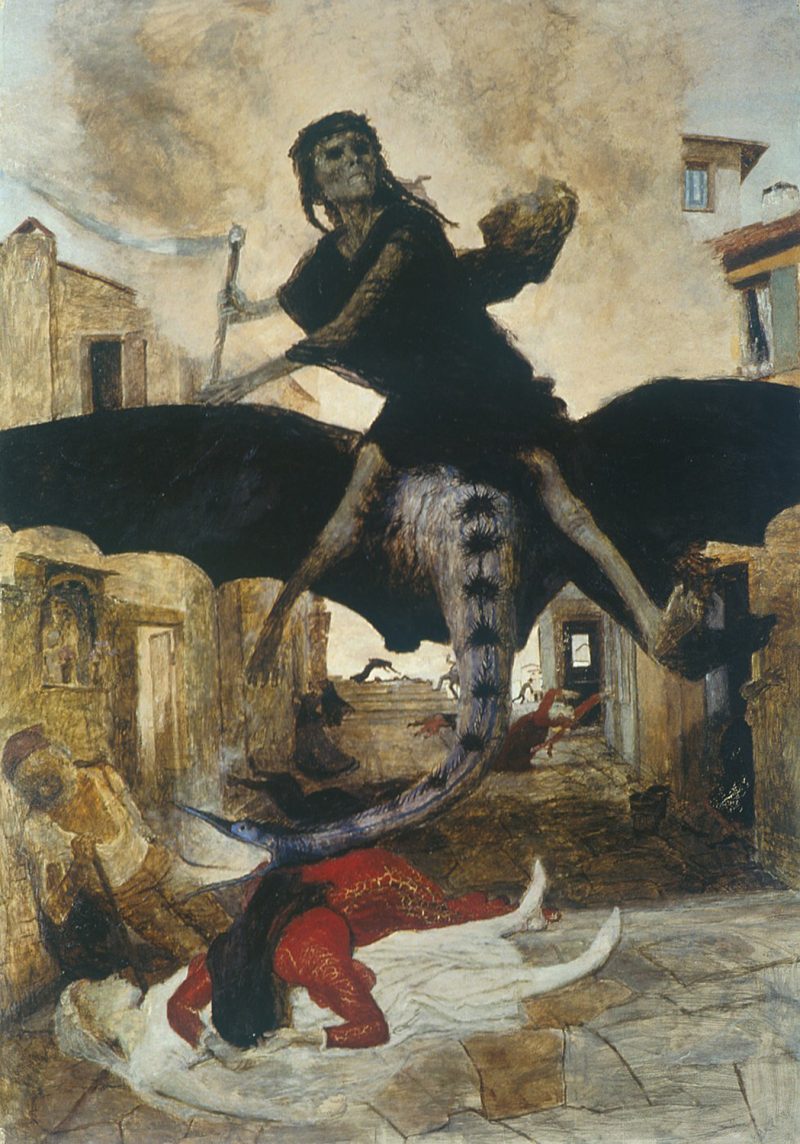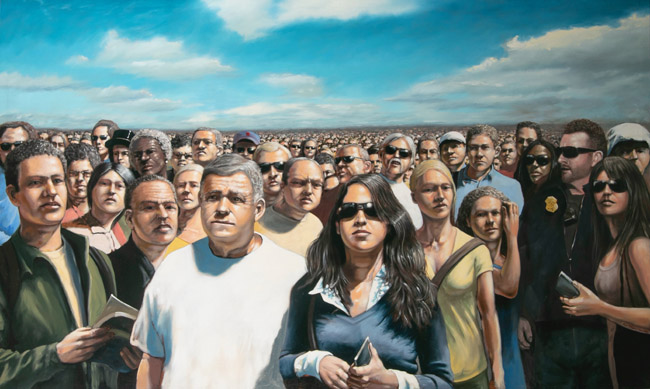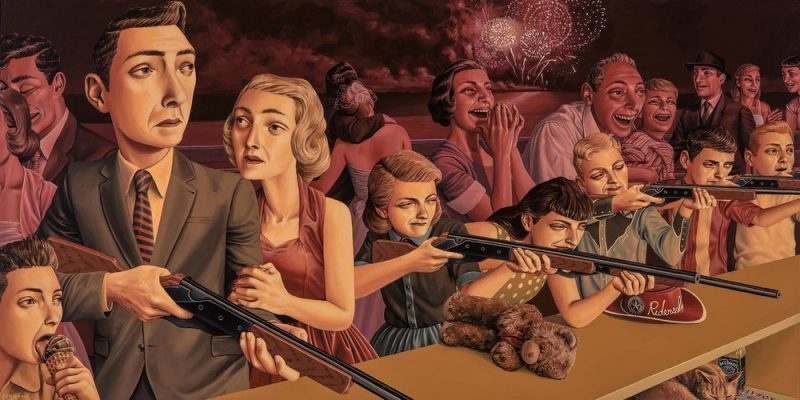In the painting we see two Confederate soldiers; the ghostly one with the Johnny Cash t-shirt fades in and out existence as a dove of peace flutters over his shoulder. The gun of the soldier on the left is smoking, indicating that he has just shot us the viewer. The hands of both soldiers form the sign of the Benediction. Scott states that “The ghost is something of a metaphor for the ephemeral undercurrent of southern identity, haunted by a past they never quite remember right.”
He goes on to say “I painted [this] as a direct response to the white supremacist shooting at the Emanuel African Methodist Episcopal church in Charleston. This piece draws its title from the Johnny Cash song, which transfigures the book of Revelations from the Bible into something like a gospel dirge. The second coming is perhaps the quintessential allegory of the southern ethos. ‘The south shall rise again’ and ‘He is risen,’ phrases that echoed through my youth, describe a culture obsessed with an imagined past glory distorted like a half remembered dream, and an apocalyptic future return to that glory, not dissimilar to the promise of Trump’s 2016 campaign slogan ‘Make America Great Again.’
“Growing up in trailer parks and project housing in suburban Atlanta, I shared the socioeconomic strata with people of color and the white poor. Race and racism was so fundamentally woven into the fabric of the community that seeing a confederate flag and a shotgun in the back of a truck parked at my high school was just as common as open talk about who was a KKK member. Above all, the mythology of the Civil War was just as much in the air we breathed as Jesus was in the water we drank.
“I witnessed both race riots and a school shooting. Both experiences left me horrified, but gave me a preview of what has now engulfed our country since the election of the first openly white supremacist president since the Civil Rights era. Not unlike the termed “War of Northern Aggression”, our present moment is marked by a tectonic rift in national identity – neither side agrees on what America is or should be, because fundamentally, we cannot even agree on the facts that form the reality we inhabit.
“I approach this work, as with all my political work, as a memoir – inserting myself into the narrative, hoping to lower the viewer’s defenses by illustrating my privilege and vulnerability first before asking them to reflect on themselves. I don’t intend to act as a proxy for minority voices, but more so a bridge to those who might not hear them, to initiate a dialogue with the conservative culture in which most contemporary classical paintings exist.”
